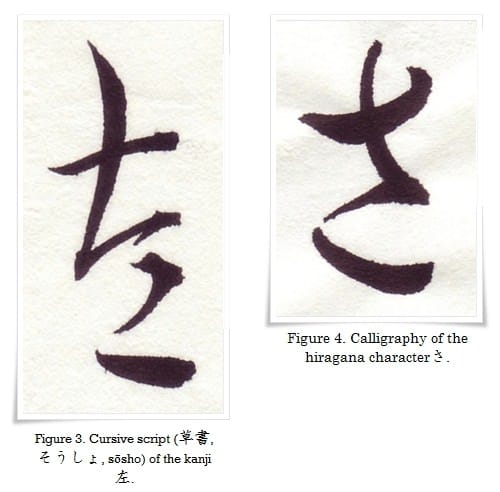The modern form of さ comes from the cursive form of the kanji 左 (さ, sa, i.e. “left”). Follow the progression of the different scripts shown in Figures 1 to 3 to understand its origin.
Figure 1. Standard script (楷書, かいしょ, kaisho) of the kanji 左. Calligraphy by 品天龍涙 (ぽんてりゅうるい, Ponte Ryūrui), ink on paper.
Figure 2. Semi-cursive script (行書, ぎょうしょ, gyōsho) of the kanji 左. Calligraphy by 品天龍涙 (ぽんてりゅうるい, Ponte Ryūrui), ink on paper.
Figure 3. Cursive script (草書, そうしょ, sōsho) of the kanji 左. Calligraphy by 品天龍涙 (ぽんてりゅうるい, Ponte Ryūrui), ink on paper.
Figure 4. Calligraphy of the hiragana character さ. Note the corresponding shape with the cursive form of the character 左. Calligraphy by 品天龍涙 (ぽんてりゅうるい, Ponte Ryūrui), ink on paper.
Figure 5. The word さけ (sake, i.e. “sake”) written in Japanese kana (かな) script. The hiragana character け is based on the cursive form of the kanji 計 (け(い), ke(i), i.e.: “plan”, “measure”, etc.), which is explained in this article. Calligraphy by 品天龍涙 (ぽんてりゅうるい, Ponte Ryūrui), ink on paper.



